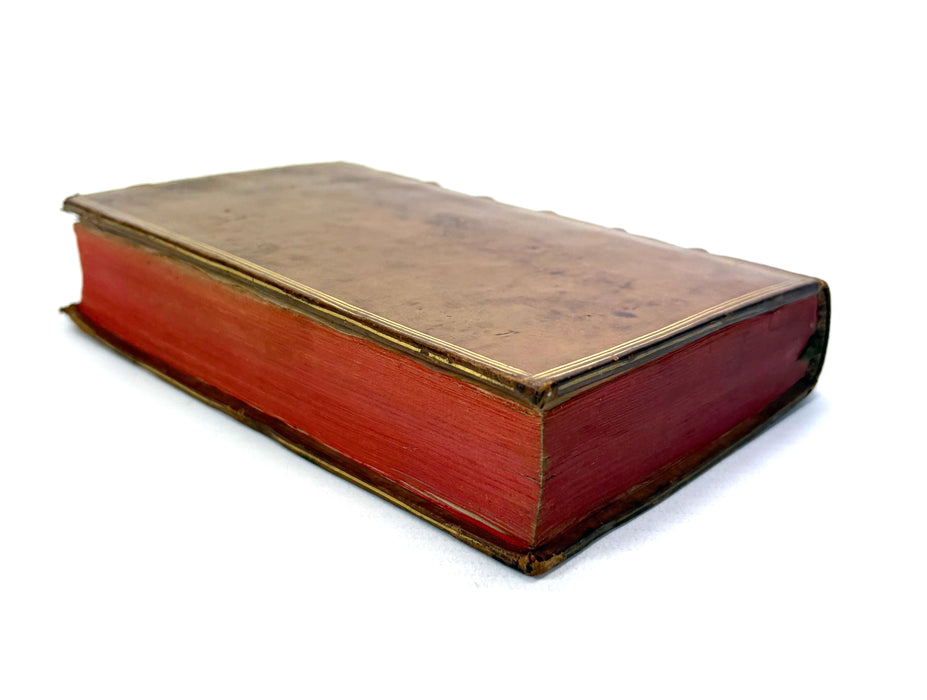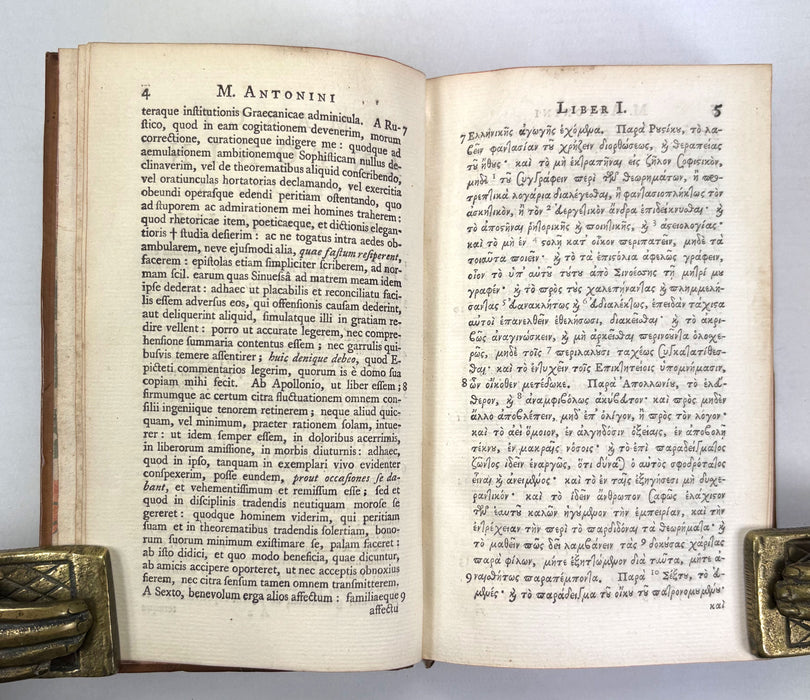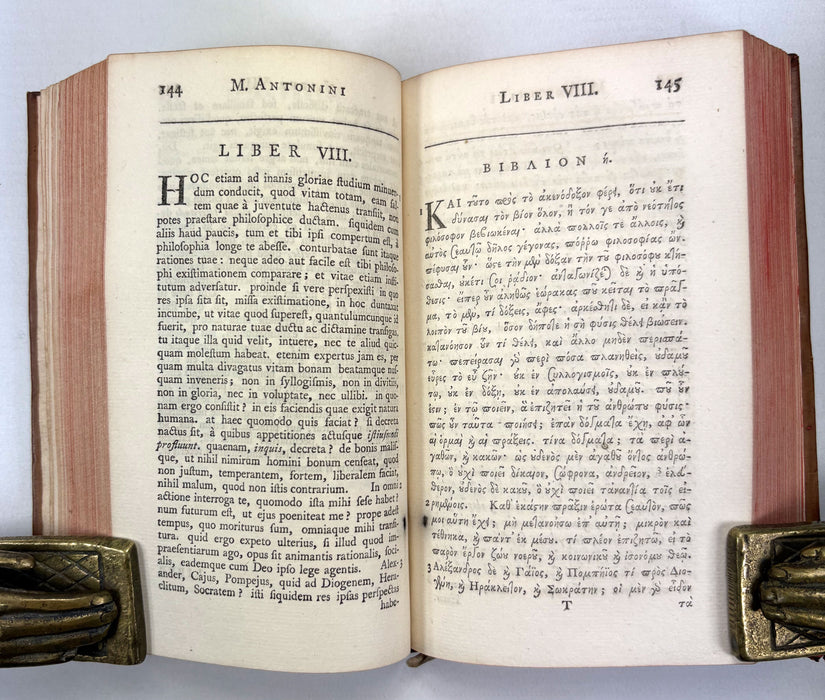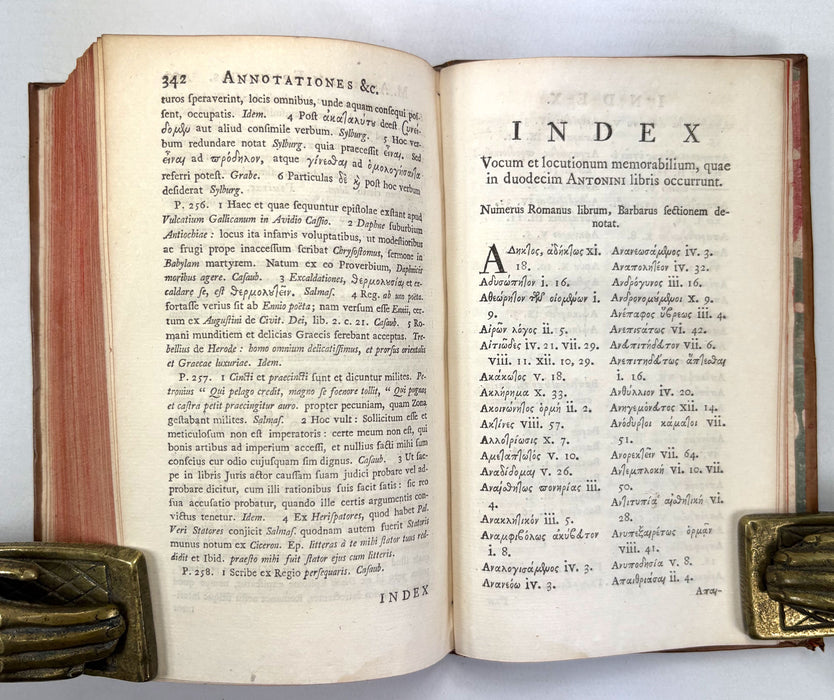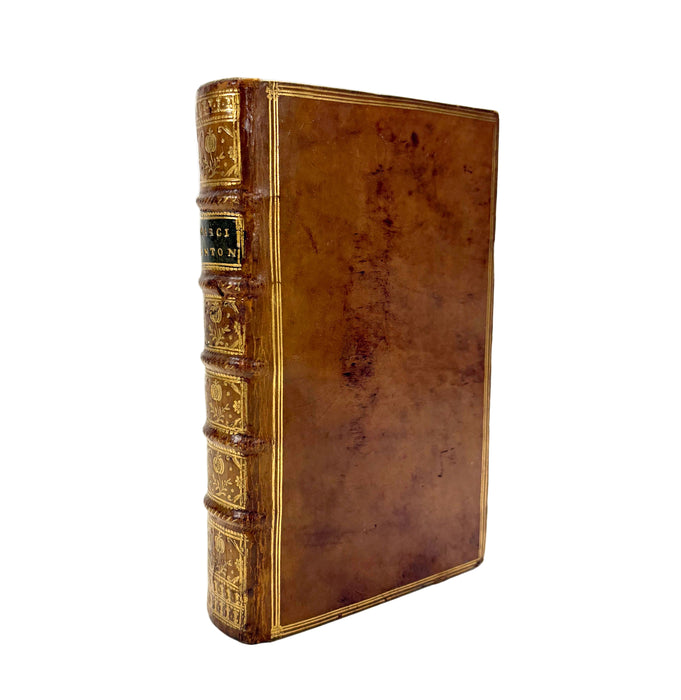
Marci Antonini Imperatoris, Libri XII - Marcus Aurelius’ Meditations (Τὰ εἰς ἑαυτόν)
Marci Antonini Imperatoris, Libri XII
(Marcus Aurelius – The Meditations / Τὰ εἰς ἑαυτόν)
One of the great works of Stoic philosophy, preserved in twelve books ("Libri XII"). The Meditations offer the personal reflections of the Roman Emperor Marcus Aurelius on virtue, reason, and self-discipline. Dual-language editions such as this - Greek with facing Latin translation - were prized by classical scholars from the seventeenth century onwards.
A handsome early nineteenth-century Greek–Latin edition, printed in clear type on laid paper, probably deriving from the learned versions of Thomas Gataker (Cambridge 1626) or Johann Schweighäuser (Leipzig 1799) that were repeatedly re-issued by European academic presses in the early 1800s.
The format, typography, and quality of the laid stock suggest a Continental printing c. 1820–1835, possibly Leipzig (Tauchnitz/Teubner) or Paris (Didot). The work is complete; the "Libri XII" refer to the internal division of the Meditations, not to a volume number in a series.
Binding: contemporary polished calf with gilt-tooled spine in compartments, gilt green morocco title label, and gilt double-ruled borders to the boards. All edges red. Marbled endpapers. Light rubbing to joints and extremities only. Sound and very attractive.
Provenance: Cortachy Castle Library, seat of the Earls of Airlie, Angus, Scotland (bookplate to front pastedown). Signed “Ogilvy” on the half-title.
Condition: very good throughout; text clean, bright, and well printed.
Text: Greek and Latin on facing pages.
Pagination: 342 pp + (10) Index.
Dimensions: approx. 163 mm × 103 mm × 30 mm.
Weight: c. 361 g (unpacked).
Bibliographic note:
Although undated and lacking its full title page, this edition’s typography, paper, and layout point to an early nineteenth-century continental academic press, most likely Leipzig (Tauchnitz or early Teubner) or possibly Paris (Didot). The clear Greek type with wide leading, use of laid paper rather than wove, and the compact 12mo format are all characteristic of classical school and scholarly editions produced between about 1820 and 1835. Later mid-century printings (Teubner, Didot, Whittaker) typically used wove paper and smaller, denser type. The text follows the traditional division into twelve books, based ultimately on the editions of Gataker (1626) and Schweighäuser (1799), which set the standard for nineteenth-century bilingual printings of the Meditations.



